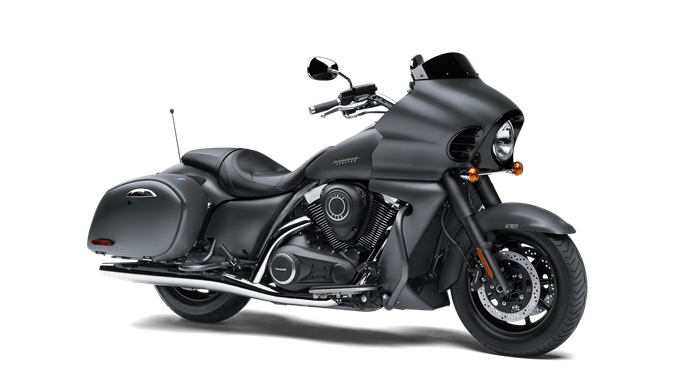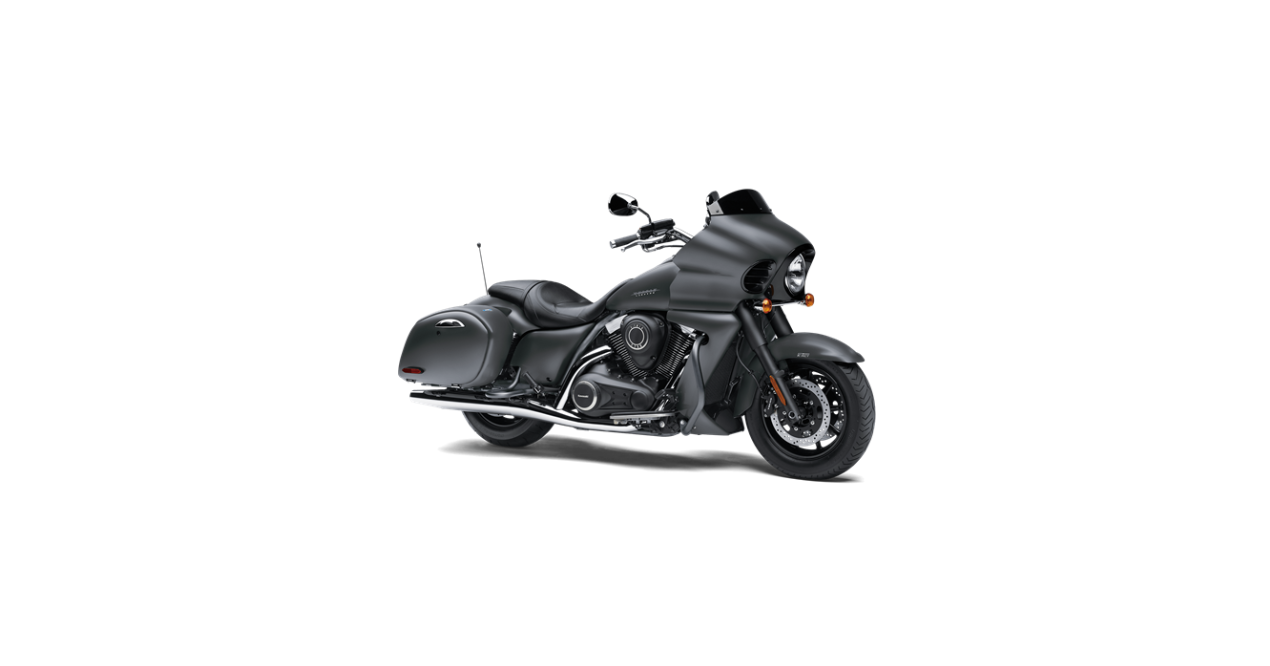2022 Kawasaki Vulcan 1700 Vaquero ABS Safe Riding Technique

Safe Riding Technique
The points given below are applicable for everyday motorcycle use and should be carefully observed for safe and effective vehicle operation. For safety, eye protection and a helmet are strongly recommended. You should be aware of and verify the applicable safety regulations in force prior to riding your motorcy- cle. Gloves and suitable footwear should also be used for added pro- tection in case of a mishap. A motorcycle does not provide the impact protection of an auto- mobile, so defensive riding in addi- tion to wearing protective apparel is extremely important. Do not let protective apparel give you a false sense of security. Wear the riding wear which have protectors for each parts of the body (chest, shoulders, back, elbows and knees, etc.) as much as possible, or wear protectors for them.
- Always wear a long-sleeved jacket and long trousers which are abraSion resistant and keep you warm.
- Wear clothing that allows freedom of movement.
- Avoid wearing clothes that have loose cuffs or other fastenings which could interfere with the controls of your motorcycle.
- Wear bright, highly visible clothing.
When riding always keep both hands on the handlebars and both feet on the footpegs. Removing your hands from the handlebars or feet from the footpegs while riding can be hazardous. If you remove even one hand or foot, you can reduce your ability to control the motorcycle. Before changing lanes, look over your shoulder to make sure the way is clear. Do not rely solely on the rearview mirror; you may misjudge a vehicle’s distance and speed, or you may not see it at all. In general your actions should be smooth as sudden acceleration, braking or turning may cause loss of control, especially when riding in wet conditions or on loose roadway surfaces when the ability to maneuver will be reduced. When going up steep slopes, shift to a lower gear so that there is plenty of power to spare rather than over-loading the engine. When applying the brakes, use both the front and rear brakes. Applying only one brake for sudden braking may cause the motorcycle to skid and lose control. When going down long slopes, control vehicle speed by closing the throttle. Use the front and rear brakes for auxiliary braking. In wet conditions, rely more on the throttle to control vehicle speed and less on the front and rear brakes. The throttle should also be used judiciously to avoid skidding the rear wheel from too rapid acceleration or deceleration. Riding at the proper rate of speed and avoiding unnecessarily fast acceleration are important not only for safety and low fuel consumption but also for long vehicle life and quieter operation. On rough roads, exercise caution, slow down, and grip the fuel tank with the knees for better stability. When quick acceleration is necessary as in passing, shift to a lower gear to obtain the necessary power. Do not downshift at too high an rimin (rpm) to avoid damage to the engine from overrevving. Avoiding unnecessary weaving is important to the safety of both the rider and other motorists.

